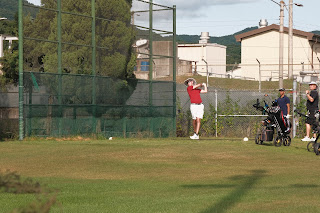Above: Leica D-Lux Typ 109 - The Best Travel Camera Ever
I recently took a much needed 30-day vacation, known as "leave" in the Army and traveled back home to New Mexico to spend time with my dad and my awesome dog Oliver. Within those 30 vacation days, I also planned a short trip to Palm Springs, California to visit a few of my life long friends. I wanted to travel light but still wanted to get outstanding quality images, after all, my best buddy Matt was driving a brand new Tesla 3 Performance model, of which, I definitely wanted to grab a few snap shots and the Coachella Valley itself is so picturesque. I knew I needed a small, compact travel camera that could also deliver the goods.
Enter the Leica D-Lux Typ 109. I've owned this camera for a few years and although Leica has released a newer version (D-Lux 7), I just can justify the upgrade as the Typ 109 does everything well and that legendary Leica image quality never fails me.
The Leica D-Lux Typ 109 features a highly versatile lens with a 35mm equivalent focal range of 24-75mm, which is perfect for travel. You can capture moderately wide angle shots and a bit of telephoto zoom as well. The lens features a large, variable aperture from f/1.7 (at 24mm) to f/2.8 (at 75mm) which handles low-light situations with ease (see sample images below).
The sensor is a 4/3 (known as micro 4/3) which is the same size found in most Panasonic Lumix branded cameras such as the superb GH6. This sensor, while slightly smaller than APS-C sensors, does not leave you wanting in detail, sharpness or resolution. It's 13 megapixels are more than enough to deliver quality images even for prints of all sizes. The resolution is 4112 x 3088 pixels, so that's pretty big.
So when it comes to travel cameras, what probably most important is size. On my trip to Palm Springs I took along only a small backpack, and did not want to lug my interchangeable lens camera and lens kit around. I just wanted to focus on spending time with my friends. But a compact camera like this also let's you capture great images, and that's a wonderful convenience. It weighs less than one pound, .89 lbs to be exact and its small dimensions (4.65 inches x 2.6 x 2.17) allow it to fit in a jacket pocket or in my case, a side pocket in my cargo shorts.
Phoenix Sky Harbor International Airport
The trip from El Paso, Texas to Palm Springs, California requires a change at Phoenix because there are very few direct flights from El Paso to anywhere other than Phoenix, Dallas or Denver, or so it seems. But, both legs of the flight are shot and before I knew it, bam! I was in the scenic valley of the Coachella... with my Leica D-Lux Typ 109 in my shorts pocket. Ready to be whipped out at a moments notice.
I just love how Leica lenses capture the light and the colors and tones are ultra-realistic.
El Paseo is known as the Rodeo Drive of the Coachella Valley. The palm tree lined streets are dotted with art and sculptures. The weather is nearly perfect this time of year and the local mountains still have a bit of snow, the scene is picturesque.
Matt's cousin Kerri is definitely the artistic type and I had a feeling, after she showed me some of her art on her cell phone, that I would love to see and photograph her eclectic style, art and knick-knacks at her home and I was not disappointed. There were little pieces of her mixed media art pieces about the house and little positive-thinking reminders just about every where you looked.
You can tell a lot about a person by the books they keep.
Stay positive.
And finally, I got a chance to show off the low-light capabilities of this fast (1.7 - 2.8) lens when Matt and I attended a night session at the BNP Paribas Open. We got to enjoy the tennis match from a luxury suite, thanks to some of Matt's highly placed connections.
As you can see, the Leica D-Lux Typ 109 is a fantastic compact travel camera. The little red dot on the front of the camera body exudes respect and will turn some heads for those "in the know" of cameras. The bottom line is that it is small and discreet and pretty much guarantees you'll be going home with memorable photos worth printing and keeping in your travel scrap book.

































































